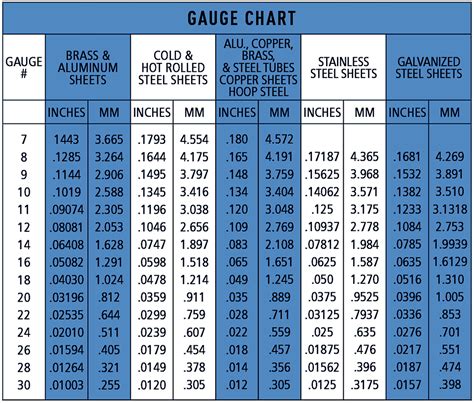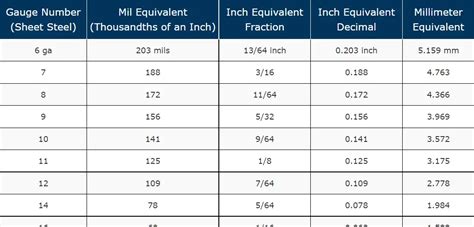26 gauge sheet metal vs 29 Discover the pros and cons of 22, 24, 26, and 29 gauge metal roofs, as well as their differences, to help you determine which option best suits your needs. We offer the most flexible cabinet and rack solutions designed to meet the needs of the most demanding environments. With the most frame styles available in either tubular steel, aluminum, or sheet metal, our cabinets and racks provide an industry-leading standard in .
0 · metal roofing gauges chart
1 · metal roofing conversion chart
2 · corrugated metal gauge chart
3 · carports 26 gauge vs 29
4 · 29 gauge vs 26
5 · 29 gauge metal roofing thickness
6 · 29 gauge metal roofing reviews
7 · 26 gauge metal roofing thickness
Most trolling motor mount brackets available today only provide a static mount point on your deck that leaves the trolling motor hanging over the side of the hull boundary. This makes the trolling motor, and your deck, vulnerable to impact and stress damage.
This article will explain the difference between 26 vs. 29-gauge metal roofing. It will also detail some of the different materials your new metal roof can be made out of, as well as the .
Choosing between 26 gauge and 29 gauge sheet metal depends on the specific requirements of your project, including durability, strength, and budget considerations. While 26 gauge offers greater thickness and strength, . Discover the pros and cons of 22, 24, 26, and 29 gauge metal roofs, as well as their differences, to help you determine which option best suits your needs. What is better, 26-gauge or 29-gauge roofing? Choosing 26-gauge vs. 29-gauge roofing depends on your needs and the kind of structure you are building. 26-gauge steel is .
26 vs 29 gauge metal roofing. When comparing 29 vs 26 gauge metal roofing, consider the following factors: Thickness: 26 is thicker than 29. The thickness of a 26-gauge roof is approximately 0.0188 inches, while a 29-gauge roof . Union Corrugating Company manufactures metal roofing in 29, 26 and 24 gauges. The company indicates that 29-gauge metal is the thinnest metal that's recommended for use on homes. Neither 29- nor 26-gauge metals may .In this system, the lower the numbered caliber, the thicker the sheet of metal. A 22 GA. is much thicker than a 29 GA. This is important for roofing because the thicker the metal, the more structural integrity it provides – the less likely to be .The main difference between 26 vs 29 gauge roofing is the thickness of the metal. 26 gauge is about 0.02 inches thicker than 29 gauge, so that it will cost more per square foot of coverage. This means a 26 gauge roof will cost about 10-15% .
When it comes to 26 vs. 29, 26-gauge is the thicker metal. Most homes in residential areas use 29-gauge metal panels. The weight of 29-gauge metal roofing may differ, though, depending on the type of metal that you choose. In this article, we analyze which panel provides the most value by comparing 26 gauge vs 29 gauge steel in the following areas: 1. Durability Of 26 Gauge Vs. 29 Gauge Roofing. Panels in both size gauges provide the durability benefits of metal. They are fire-resistant, low maintenance, and protect against corrosion.This article will explain the difference between 26 vs. 29-gauge metal roofing. It will also detail some of the different materials your new metal roof can be made out of, as well as the advantages and disadvantages of these materials.
Choosing between 26 gauge and 29 gauge sheet metal depends on the specific requirements of your project, including durability, strength, and budget considerations. While 26 gauge offers greater thickness and strength, 29 gauge can still provide satisfactory performance for lighter applications. Discover the pros and cons of 22, 24, 26, and 29 gauge metal roofs, as well as their differences, to help you determine which option best suits your needs. What is better, 26-gauge or 29-gauge roofing? Choosing 26-gauge vs. 29-gauge roofing depends on your needs and the kind of structure you are building. 26-gauge steel is thicker than 29-gauge steel and provides more protection against external elements such as weather and insects.26 vs 29 gauge metal roofing. When comparing 29 vs 26 gauge metal roofing, consider the following factors: Thickness: 26 is thicker than 29. The thickness of a 26-gauge roof is approximately 0.0188 inches, while a 29-gauge roof measures around 0.0142 inches.
Union Corrugating Company manufactures metal roofing in 29, 26 and 24 gauges. The company indicates that 29-gauge metal is the thinnest metal that's recommended for use on homes. Neither 29- nor 26-gauge metals may be the best option if you live in an area that's prone to high winds and severe weather conditions.
In this system, the lower the numbered caliber, the thicker the sheet of metal. A 22 GA. is much thicker than a 29 GA. This is important for roofing because the thicker the metal, the more structural integrity it provides – the less likely to be damaged by impact or .The main difference between 26 vs 29 gauge roofing is the thickness of the metal. 26 gauge is about 0.02 inches thicker than 29 gauge, so that it will cost more per square foot of coverage. This means a 26 gauge roof will cost about 10-15% more than a 29 gauge roof. When it comes to 26 vs. 29, 26-gauge is the thicker metal. Most homes in residential areas use 29-gauge metal panels. The weight of 29-gauge metal roofing may differ, though, depending on the type of metal that you choose.
metal roofing gauges chart
In this article, we analyze which panel provides the most value by comparing 26 gauge vs 29 gauge steel in the following areas: 1. Durability Of 26 Gauge Vs. 29 Gauge Roofing. Panels in both size gauges provide the durability benefits of metal. They are fire-resistant, low maintenance, and protect against corrosion.This article will explain the difference between 26 vs. 29-gauge metal roofing. It will also detail some of the different materials your new metal roof can be made out of, as well as the advantages and disadvantages of these materials.
Choosing between 26 gauge and 29 gauge sheet metal depends on the specific requirements of your project, including durability, strength, and budget considerations. While 26 gauge offers greater thickness and strength, 29 gauge can still provide satisfactory performance for lighter applications.
Discover the pros and cons of 22, 24, 26, and 29 gauge metal roofs, as well as their differences, to help you determine which option best suits your needs. What is better, 26-gauge or 29-gauge roofing? Choosing 26-gauge vs. 29-gauge roofing depends on your needs and the kind of structure you are building. 26-gauge steel is thicker than 29-gauge steel and provides more protection against external elements such as weather and insects.26 vs 29 gauge metal roofing. When comparing 29 vs 26 gauge metal roofing, consider the following factors: Thickness: 26 is thicker than 29. The thickness of a 26-gauge roof is approximately 0.0188 inches, while a 29-gauge roof measures around 0.0142 inches.
Union Corrugating Company manufactures metal roofing in 29, 26 and 24 gauges. The company indicates that 29-gauge metal is the thinnest metal that's recommended for use on homes. Neither 29- nor 26-gauge metals may be the best option if you live in an area that's prone to high winds and severe weather conditions.In this system, the lower the numbered caliber, the thicker the sheet of metal. A 22 GA. is much thicker than a 29 GA. This is important for roofing because the thicker the metal, the more structural integrity it provides – the less likely to be damaged by impact or .The main difference between 26 vs 29 gauge roofing is the thickness of the metal. 26 gauge is about 0.02 inches thicker than 29 gauge, so that it will cost more per square foot of coverage. This means a 26 gauge roof will cost about 10-15% more than a 29 gauge roof.
metal roofing conversion chart
cnc laser cutting machine for sale second hand

cnc laser machine operator job in melbourne

corrugated metal gauge chart
Commercial/industrial roofing contractor, mechanical contractor, sheet metal fabricator 12 locations
26 gauge sheet metal vs 29|metal roofing gauges chart